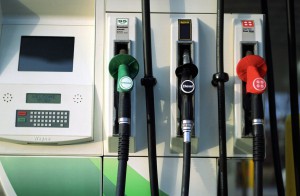The national average price of gas has increased about seven cents per gallon over the past week due to sharply rising crude oil costs as AAA’s weekly survey of gasoline prices reflected a reversal of the downward trend in the face of concerns about oil supplies and stockpiles.
Domestic crude oil prices last week reached the highest levels of 2015 as supplies built more slowly than anticipated. Despite the increase, consumers continue to benefit from substantially lower gas prices compared to recent years, with the national average of $2.46 per gallon this week representing the least expensive average for this date since 2009.
The market also weighed potential geopolitical concerns in the Middle East. Domestic oil prices are more than $10 per barrel higher than a month ago, which has contributed to higher gas prices, AAA said.
Oil prices ended in positive territory this week after a drop in stockpiles at the delivery point for U.S. crude in the second half of last week outweighed pressure from near record high production in Saudi Arabia.
Tensions after the dispatch of U.S. Navy ships to waters near Yemen and an alert issued by Saudi Arabia for a possible militant attack also put a floor beneath U.K. North Sea Brent and U.S. crude prices, traders said. Brent, the more widely referenced benchmark, settled flat at $63.45 a barrel, after falling more than $1 earlier in the session.
“There were certainly competing influences, with the U.S. crude draw inspiring the bulls, while the bears pounced on the record high Saudi output,” said John Kilduff, partner at New York energy hedge fund Again Capital told Reuters
Speculation has been rife that rapidly climbing U.S. crude supplies would soon cause storage tanks in Cushing to top, leaving little or no room for more barrels. The drop reported by Genscape eased some of that anxiety, traders said.
(Gas prices continued dropping during Easter. For more, Click Here.)
Crude prices have risen around 17% since April began, on speculation about falling U.S. output as the domestic oil rig count dropped down to 2010 lows.
But Wall Street bank and major energy trader Morgan Stanley said the drop could be outweighed by increases in Saudi production.
(Click Here for details about GM investing $16 billion in new products for China.)
Meanwhile, planned and unplanned refinery problems also continue to affect the market, and may continue to impact price heading into the summer driving season. On the West Coast where retail prices continue to be among the highest in the nation, California gasoline production has now reached a four-month high.
While trending higher, the state’s numbers still reflect reduced production at the ExxonMobil refinery in Torrance, Calif., which reduced production following an explosion in February. The refinery is not scheduled to complete its repair of damaged equipment until July, so regional prices may remain stubbornly high and sensitive to further production issues until that facility is back to full strength.
(To see more about GM selling 2.42 million vehicles globally in Q1, Click Here.)
California at $3.15 per gallon continues to lead the market posting the nation’s highest retail average for gasoline, and is followed by Hawaii at $3.07 per gallon, Alaska at $2.98 per gallon, Nevada at $2.80 per gallon and Washington $2.75 per gallon. Drivers in South Carolina at $2.21 per gallon, Mississippi at $2.23 per gallon and Alabama at $2.24 per gallon are paying the lowest averages at the pump.


Same old, same old… When crude prices increase the gas stations change the price immediately but when crude oil prices drop the stations are slow to lower their prices. It’s just a game of exploitation by all involved.
What I don’t understand, here in southwest Michigan, our price went from $2.17 to $2.49 late last week. Yesterday, Monday, the price had come down to $2.27. Today, Tuesday, the price went back to $2.59. How does this happen? Price gouging?
Agree Jorge. And while the AAA average may be reported at 7 cents, in my neck of the woods prices jumped 20 cents!! This is just a ramp-up to the so-called “summer driving season”. I guess the excuse of the winter to summer blend switch has faded away so another excuse needed to be feed to the public.
Yup, same game, different name. The average price change is laughable in many areas of the country where the pump price changes 20-30 cents a day. It’s all about exploiting consumers to the max. With the state and federal politicians being bought off, the oil industry Cabal does whatever they feel like.
Anyone notice a drop in UPS/FEDEX/DHL fuel surcharges since the pump price dropped eight months ago? The correct answer is: “NO”. These folks are still charging excessive fuel surcharges and I’ll bet there will be multiple class action lawsuits over this.
Violation of law for massive profit is the current corporate ideology and it pays handsome profits even after the fines and convictions.
You know there is “Price Fixing” & colusion when within minutes every station in town, no mater the brand, changes their price up to the same amounts! And, instead of just a reasonable increased change they jump it 20 & 30 cents at a time. Gouging us? Yes indeed!